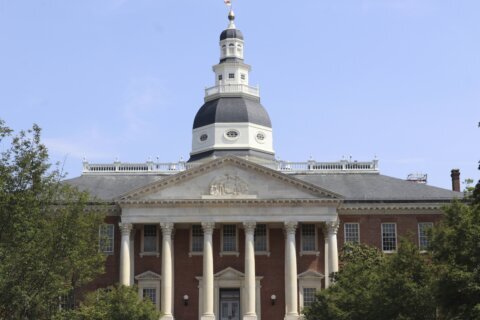County executives from eight Maryland jurisdictions — including Prince George’s and Montgomery counties — traveled to Annapolis to testify in favor of a school construction plan.
The Built to Learn Act would pump $2.2 billion into new school buildings and renovation projects. Some of the funding would come from bonds issued from the Maryland Stadium Authority.
Prince George’s County Executive Angela Alsobrooks reminded lawmakers that the announcement of the Built To Learn Act in November took place at a Prince George’s County school that was undergoing emergency renovations.
“Half the building was being held up by large hydraulic jacks,” she said.
Alsobrooks said it is critical that children go to school in “state-of-the-art buildings that are warm in the winter, cool in the spring and summer and structurally sound.”
Montgomery County Executive Marc Elrich told members of the House Appropriations Committee that his county is the 14th-largest school district in the nation, with 165,000 students.
“Parents expect that kids are not going to be sitting on desks or on the furniture in the science labs. That they’re actually going to be in chairs, and that there’s going to be room for them,” Elrich said.
Howard County Executive Calvin Ball told lawmakers that despite the “perceived affluence in Howard County, there is a significant need for increased capital investment for our schools.”
Ball said there is more than $500 million of deferred maintenance in the Howard County’s school system.
Elrich echoed Ball when he told lawmakers, “I’m always trying to remind people that we are not a place where the streets are paved with gold, and we have more kids on free and reduced lunch than the District of Columbia has in their entire school system.”
The legislation has been filed as the first bill in both the House and the Senate.
At Thursday’s hearing, Del. Maggie McIntosh, Chair of the Appropriations Committee, told lawmakers that among the written testimony, there was a letter of support from Gov. Larry Hogan.
Last month, Hogan announced his own plan for school construction, called the “Building Opportunity Fund.” He said that would add $3.8 billion to school construction over a period of five years.
The testimony filed by Matthew Palmer, Deputy Legislative Officer with the Governor’s Office, explained that the Hogan administration supports both House Bill 1 and Hogan’s own House Bill 338, the Building Opportunities Act, because the aim is the same.
The statement read in part: “We ask this committee to support this extremely important issue to provide world class education facilities for our children, either through this bill or through our legislation.”








